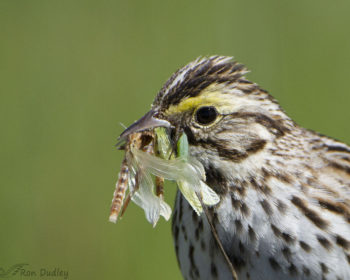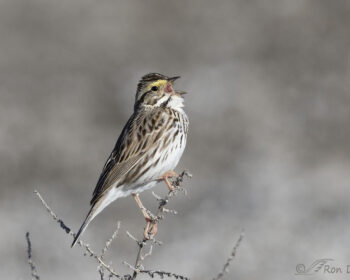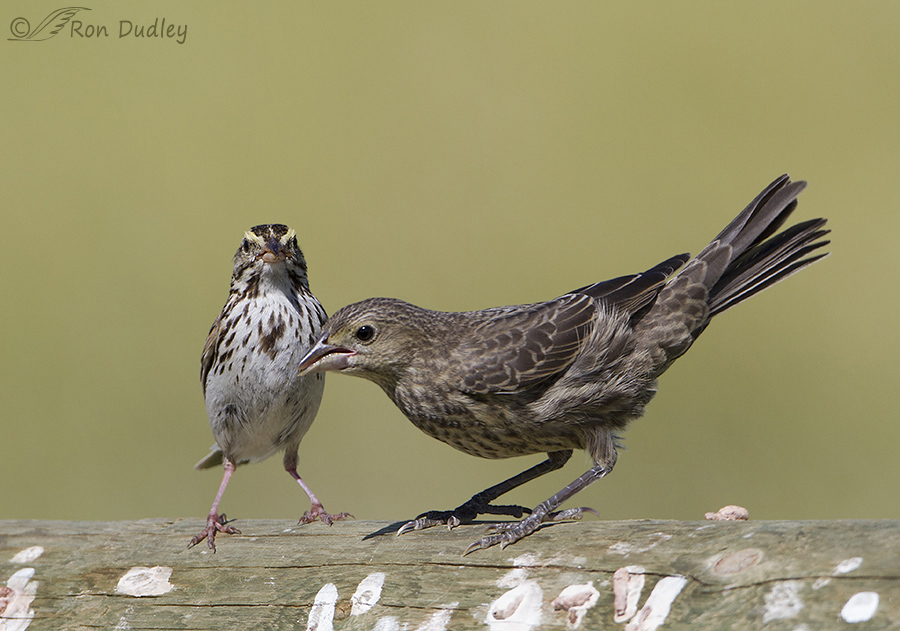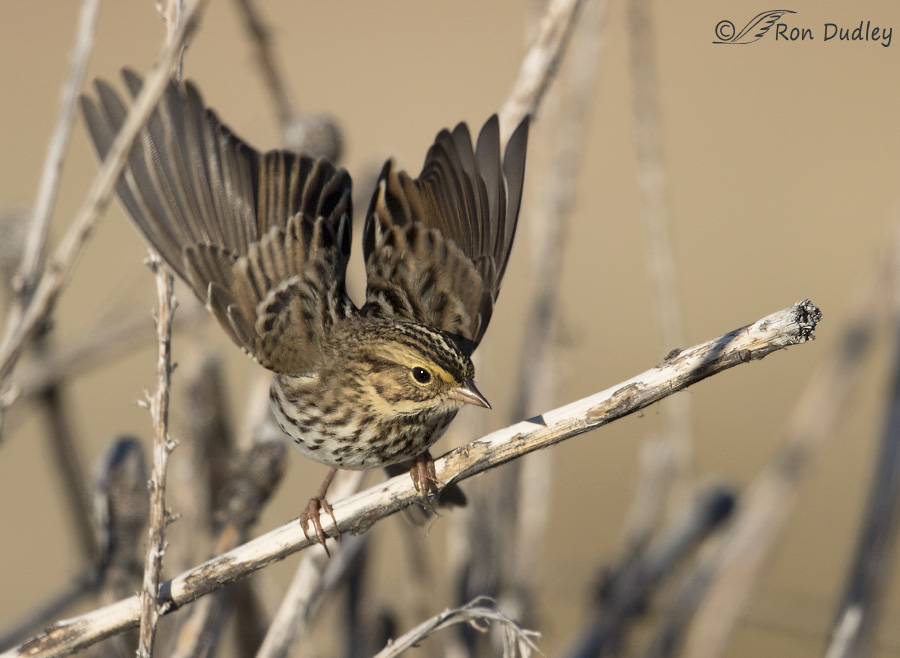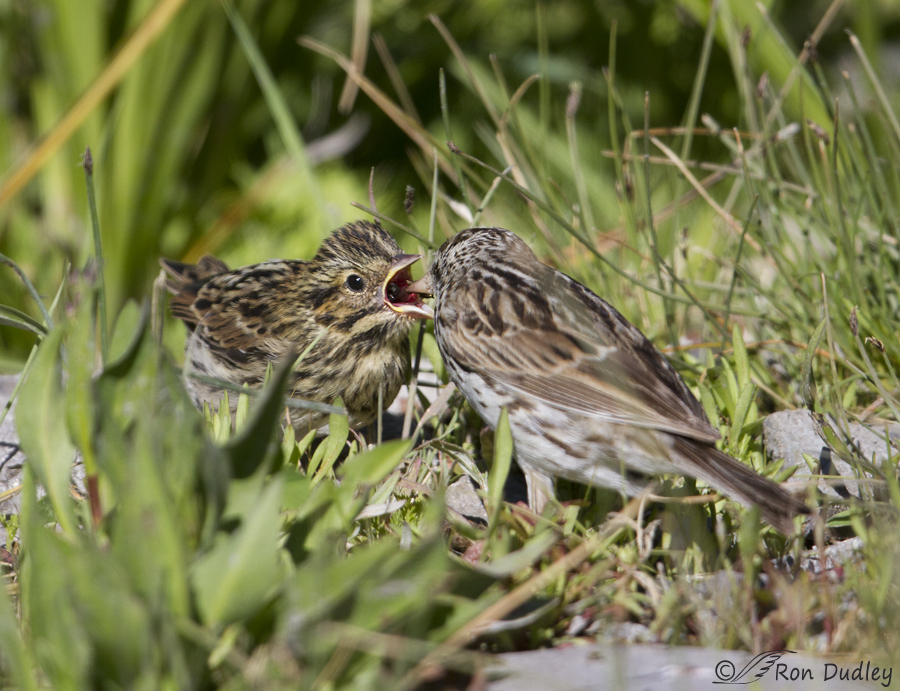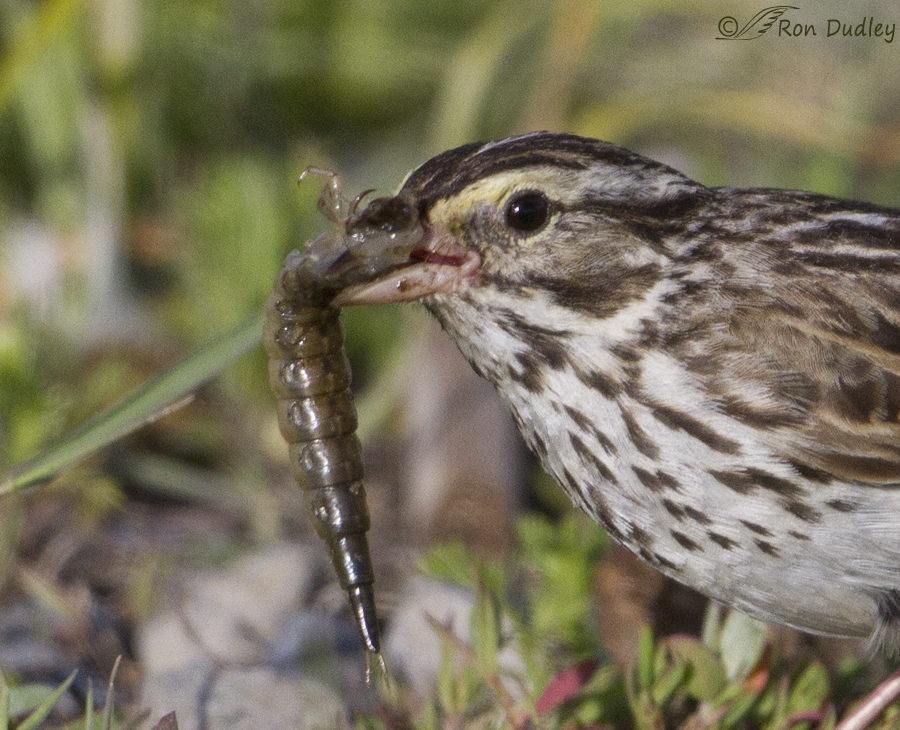Tag: savannah sparrow
Savannah Sparrow Singing In The Wind
Savannah Sparrow With A Mouthful Of Insects
The Dramatic Size Difference Between Parasitic Cowbirds And Their Host Species
A Practical Way For Bird Photographers To Help Birds
Savannah Sparrows With “Bugs” For Their Nestlings
Savannah Sparrow – A Pose I Rarely Get From Any Small Bird
Savannah Sparrow Feeding Fledgling
Savannah Sparrow – Fearless Dragon Slayer
Why The Killdeer Doesn’t “Perch”
More than half of all bird species (5000+) are classified in order Passeriformes and referred to as passerines. Passerines, sometimes known as perching birds or less accurately as songbirds, have four toes – three of them directed forward and one toe directed back. This arrangement allows for stable perching on structures such as small branches and herbaceous stems because the hind toe is opposable to the others (much like our thumbs are opposable to our fingers) which allows “grasping”. Interestingly, the tendon/bone anatomy of a passerine causes automatic closing of the foot (grasping) when the leg bends – such as when it lands on a typical perch. This arrangement also allows passerines to sleep on a perch without falling off. Here you can see the typical “three toe forward, one toe back” arrangement on this Savannah Sparrow that allows passerines to grasp narrow perches like branches or wires and remain stable on them. Animals without something like this toe arrangement would be “walking a tightrope” but these birds have no problem with it. Maintaining stability on a perch such as this would be virtually impossible without the ability to grasp, particularly in a breeze (this is a Loggerhead Shrike). This shot of a juvenile White-crowned Sparrow gives us a better look at all four toes. One more look at the opposable rear toe, this time on a Western Meadowlark. Ok, now to my point. Many birds that do not typically “perch” (with exceptions) are waterfowl and shorebirds. The Killdeer is a plover but because of the habitats…
Just A Shot That I Like… # 27, Savannah Sparrow Wing Stretch
So very often when an avian subject gives the photographer a nice wing stretch the bird is either facing away or there’s no light on the face. So I always appreciate it when things work out with a shot like that. 1/2500, f/7.1, ISO 500, 500 f/4, 1.4 tc This Savannah Sparrow (along with several others of various species) would forage in the Montana pasture grass for a while and then return to the barbed wire to preen and occasionally stretch. I like the diaphanous qualities of the right wing that allow the viewer to see the fanned tail and stretched out foot and leg through the wing feathers. Ron
Savannah Sparrow Parasitized By Cowbirds
Brown-headed Cowbirds are well-known for laying their eggs in the nests of other species – brood parasitism. A single cowbird female may lay up to 40 eggs in the nests of other species per season. More than 220 host species have been identified and at least 144 of those species have successfully raised the parasitic cowbird offspring. The physical size of the host species ranges from tiny 10 gram creepers to 150 gram meadowlarks. For a variety of reasons, the young of the parasitic cowbirds are more likely to survive than are those of the host species. The breeding success of the rare Kirtland’s Warbler has been severely reduced by cowbird brood parasitism. 1/1600 f/7.1, ISO 400, 500 f/4 On our recent trip to sw Montana we found this Savannah Sparrow bringing food (insects, mostly young grasshoppers) to one of its fledglings on a fence near our campground. 1/1600 f/6.3, ISO 400, 500 f/4 But the fledgling was a cowbird and not a Savannah Sparrow. Cowbirds are more than twice the size of Savannah Sparrows by weight and that difference is obvious here. 1/1600 f/7.1, ISO 400, 500 f/4 The cowbird youngster was boisterous and rambunctious when food was brought in. I actually had the impression that the adult sparrow was a little intimidated by the size and hyperactivity of the cowbird chick and the “parent” bird didn’t stick around for long when food was delivered. 1/1600 f/7.1, ISO 400, 500 f/4 After the chick swallowed this grasshopper the sparrow gave it another…
Birds From Our Recent Trip To Red Rock Lakes National Wildlife Refuge
I spent most of last week at Red Rock Lakes National Wildlife Refuge in southwest Montana. Regular readers of this blog know that it’s’ one of my favorite places on earth. On this trip we didn’t have as much luck with raptors as we usually do at Red Rock but we still had a nice variety of birds, mostly good weather and we experienced some breathtaking scenery and blessed solitude. Overall, a wonderful experience. 1/3200, f.6.3, ISO 640, 500 f/4, 1.4 tc Mountain Bluebirds are common this time of year so I’ll begin with a few of them. The blues of the males are very intense and hard for the photographer to resist. It’s difficult to catch them on a natural perch but most of the fence posts in the area are old and rustic which I like. 1/2000, f.7.1, ISO 500, 500 f/4, 1.4 tc I’m pretty sure this male was attempting to expel a pellet (rather than yawning) although it didn’t succeed before it flew off. 1/3200, f.7.1, ISO 800, 500 f/4 The female Mountain Bluebirds have less dramatic colors and their beauty is more subtle. I caught this one hovering in front of her nest. It’s been a traumatic spring for these bluebirds. On Memorial Day a big storm dumped 15″ of snow resulting in an 85% mortality of bluebird chicks at the refuge. They’re now trying again and have renested. 1/1600, f.6.3, ISO 500, 500 f/4, 1.4 tc Another male in the middle of a shake. I just liked the ruffled feathers combined…
Savannah Sparrows – a Bug’s Worst Enemy
On a recent camping trip to Red Rock Lakes National Wildlife Refuge a rustic old fence near where we camped was the staging area for several hunting Savannah Sparrows. They obviously had nests in the grass nearby and would regularly perch on the fence with prey in their beaks after hunting deep in the grasses. Canon 7D, 1/2500, f/7.1, ISO 640, EV -0.33, 500 f/4, 1.4 tc Boy, did they eat a lot of bugs! Most any kind of Arthropod seemed to be an acceptable part of their diet but this critter was one of their favorites. I believe it to be a dragonfly larvae. Canon 7D, 1/800, f/6.3, ISO 640, EV +0.33, 500 f/4, 1.4 tc When they returned to the fence line they would often have multiple prey in their beaks. I expected them to either immediately consume it or deliver it to the nest but that seldom happened. Instead they would typically hang around on the fence for extended periods of time with the prey still in their beaks – often for 10 minutes or more before eating it or flying off to their nest with it. I can’t explain the behavior but I’m certainly not complaining about it because that little behavioral quirk gave me many opportunities to photograph them with their bills full of interesting tidbits. Canon 7D, 1/2000, f/7.1, ISO 500, EV +0.00, 500 f/4, 1.4 tc Their diet wasn’t limited to insects either, as it wasn’t unusual to see them with spiders. Canon…


